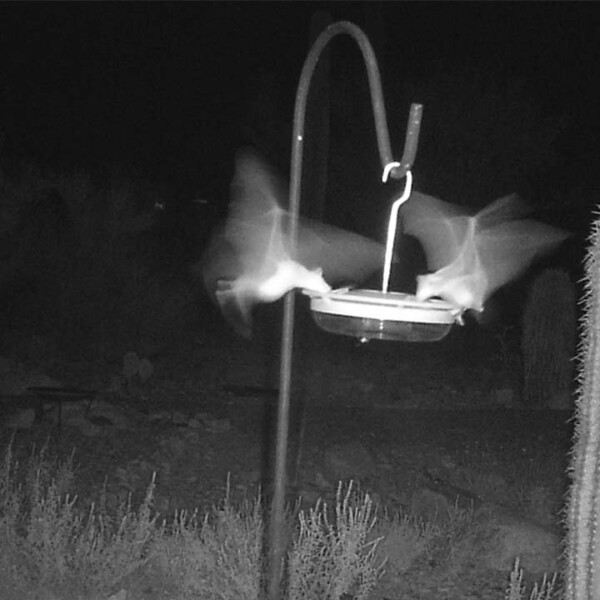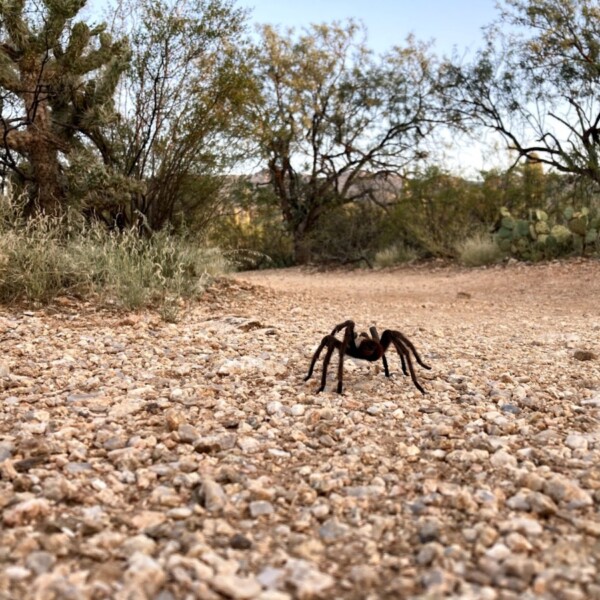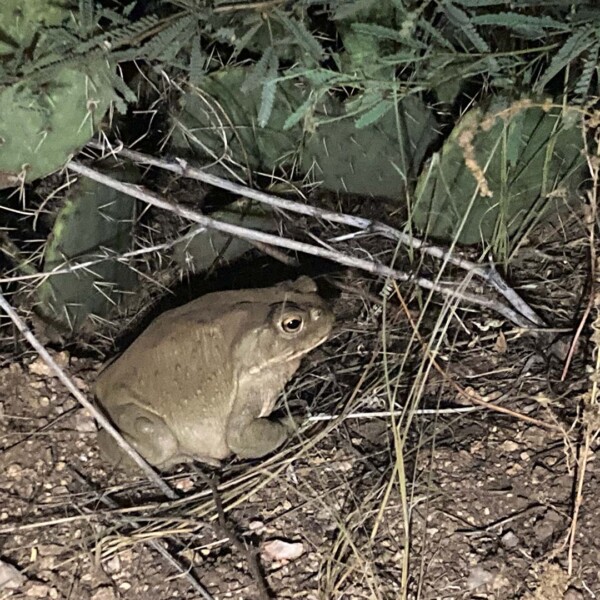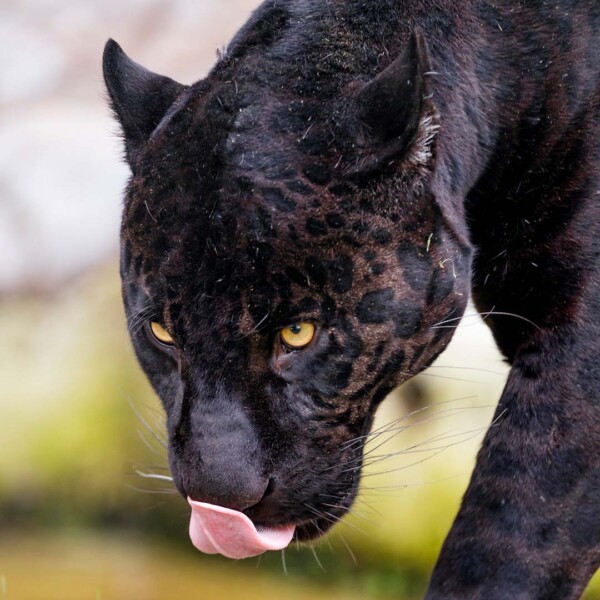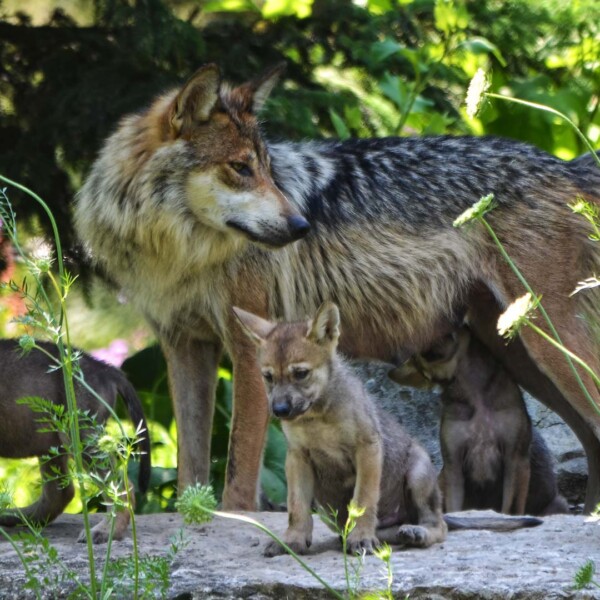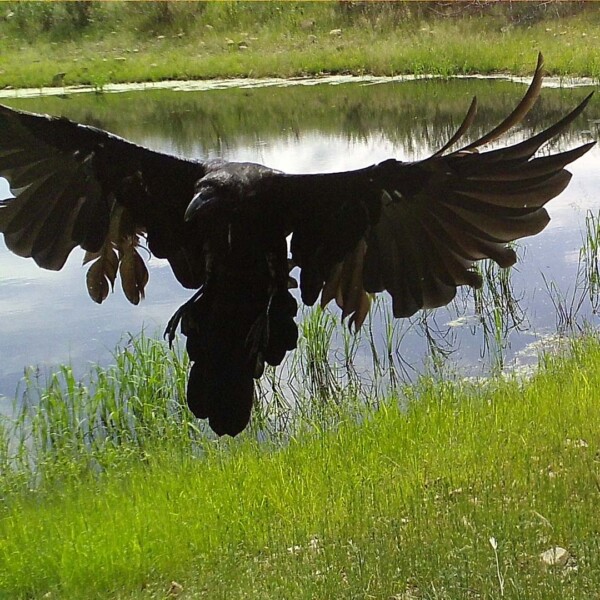As Halloween approaches, images of werewolves, chupacabras, and all sorts of other scary-spookies are everywhere. Definitely in my head; maybe in yours. Throughout the year we here at Sky Island Alliance focus on many different amazing critters — but today I want to highlight a few often associated with Halloween. They might scare some, but we think they’re pretty cool.
Bats
Misrepresented for centuries, bats are a close contender for man’s best friend, though they rarely get the credit they deserve. Although there are a few kinds of vampire bats that do drink blood, they’re not here in the Sky Islands. Our region’s bats, like the lesser long-nosed and Mexican free-tailed, are actually crucial seed dispersers and pollinators. On any given night, they can consume several thousand insects, including mosquitos. There are many ways to welcome bats to your property, for instance, by building bat houses and adding agaves and night-blooming plants to your garden. For more on bats, check out this fascinating Bacanora for Bats podcast.
Spiders
Like bats, these animals get a bad rap even though, worldwide, they eat between 400-800 million tons of insects every year. But if you’re still the squeamish type and prefer to love spiders at a distance, may we recommend growing some lavender, mint, eucalyptus, and lemongrass in your garden. These plants’ strong scents have been shown to keep away the eight-legged types. Another great option is turning off your outdoor lights. This acts as a two-for-one, as it doesn’t attract as many flying insects (which attracts spiders), and it helps keep our skies dark.
Toads
In some folklores, toads have been unfairly maligned as accursed harbingers of evil, doom, and all the other things. But, like us, they’re just trying to get along here in the Sky Islands — and they’re pretty fascinating. If you’ve ever seen a Sonoran desert toad hopping about on a desert night, you’ll know what we mean. If you’re feeling hardy and want to build an oasis for these guys in your backyard (a safe distance from household pets), check out this guide for native wildlife ponds.
Black Cats
According to popular legend, black cats can be bad luck. But we’d be thrilled to see one, especially if Panthera onca. There are thought to be only 600 black jaguars in the world today, mostly in Central America and South America. (The melanism that makes their fur coats black occurs in just a small percent of individuals.) Non-black jaguars, however, while rare, are relatively more common — found as far north as northern Mexico and occasionally in southern Arizona and New Mexico. If you’d like to help us document them and other wildlife in the borderlands, sign up for our FotoFauna program.
Wolves
No “big bad wolves” here, though lobos are native to the region. Once abundant throughout the American Southwest, the Mexican gray wolf is now the most endangered gray wolf subspecies in North America — found only in small pockets of southeastern Arizona, western New Mexico, and northern Mexico’s Sierra Madre Occidental. Check out Lobos of the Southwest to stay updated on this beautiful keystone species and ways you can help bring them back to more parts of their historic range.
Ravens
And finally, we’d be doing Edgar Allan Poe a disservice if we didn’t mention ravens. A large bird with a diverse appetite, ravens help consume dead animals and thus recycle nutrients in our ecosystems. They’re also important predators, keeping rodent populations in check. If you haven’t read Poe’s classic horror poem “The Raven” in a while, take a few moments today and treat yourself.
From everyone at Sky Island Alliance, we hope you have a safe and festive Halloween — and please remember to dispose of your carved pumpkins the fun way!
Jimmy Gribbin is Field Coordinator at Sky Island Alliance


